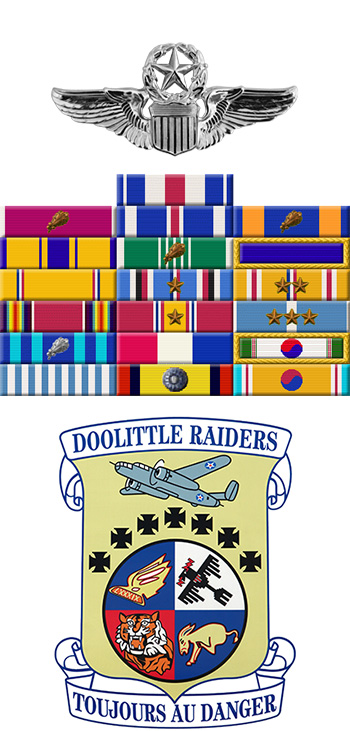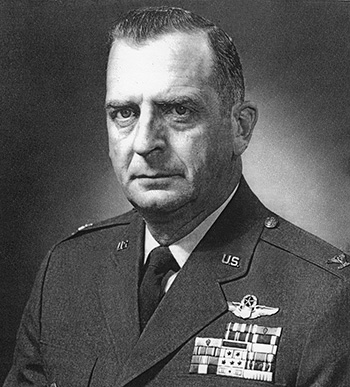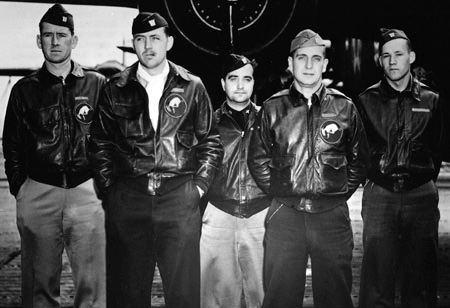
|
Dean Davenport |
 |
|||
| Rank, Service | ||||
Colonel O-6, U.S. Air Force |
||||
| Veteran of: | ||||
|
||||
| Tribute: | ||||
Dean Davenport was born on June 29, 1918, in Spokane, Washington. He enlisted in the Aviation Cadet Program of the U.S. Army Air Corps on February 7, 1941, and was commissioned a 2d Lt and awarded his pilot wings on September 27, 1941. His first assignment was as a B-25 Mitchell pilot with the 95th Bomb Squadron of the 17th Bomb Group at Pendleton Field, Oregon, from September 1941 until he was selected for the Doolittle Mission in February 1942. Lt Davenport was the co-pilot on the 7th B-25 to take off from the aircraft carrier USS Hornet (CV-8) on April 18, 1942, and after bombing its assigned targets in Tokyo, the crew crash landed off the coast of China. He remained in the China-Burma-India Theater after the raid, returning to the United States in October 1942, and later served as a technical advisor for the film "Thirty Seconds Over Tokyo". Lt Col Davenport served as a P-40 Warhawk, P-38 Lightning, and P-51 Mustang pilot in Alaska from 1944 to 1947, and during this time he served as Commander of the 18th Fighter Squadron in Alaska from September 1944 to March 1945. He completed Air Command and Staff College at Maxwell AFB, Alabama, in June 1948. His next assignment was as Assistant Deputy for Operations with Headquarters 1st Air Force at Fort Slocum, New York, from June 1948 to October 1949, followed by service as as an F-84 Thunderjet pilot and Director of Operations and Training with the 20th Fighter Wing at Shaw AFB, South Carolina, from October 1949 to May 1950. Col Davenport served as Commander of the 77th Fighter-Bomber Squadron at Shaw AFB from May 1950 to January 1951, and then as Operations Officer for the 20th Fighter-Bomber Group at Shaw AFB from February to May 1951. His next assignment was as Deputy Commander of the 49th Fighter-Bomber Wing in South Korea from May 1951 to July 1952, followed by service as Commander of the 3550th Combat Crew Training Group at Moody AFB, Georgia, from July 1952 to June 1955. Col Davenport served as Director of Requirements, as Deputy Chief of Staff for Operations, and then as Special Assistant to the Commander with Headquarters Crew Training Air Force at Randolph AFB, Texas, from June 1955 to July 1957, and then as Commander of the 4756th Air Defense Wing at Tyndall AFB, Florida, from July 1957 to July 1959. His next assignment was as Deputy Vice Commander of the 39th Air Division at Misawa AB, Japan, from July to September 1959, followed by service as Commander of the 21st Tactical Fighter Wing at Misawa AB from September 1959 to June 1960. He served as Vice Commander of the 39th Air Division at Misawa AB from June 1960 to July 1962, and then as Commander of the 325th Fighter Wing at McChord AFB, Washington, from July 1962 to August 1965. Col Davenport's final assignment was as Commander of the Boston Air Defense Sector (redesignated 35th Air Division in February 1966) at Hancock Field in Syracuse, New York, from August 1965 until his retirement from the Air Force on September 1, 1967. Dean Davenport died on February 14, 2000, and was buried at Barrancas National Cemetery at NAS Pensacola, Florida. |
||||
|
||||


